In Photos: Tiangong-1, China's Space Station Fell to Earth
China's 1st Space Station Module
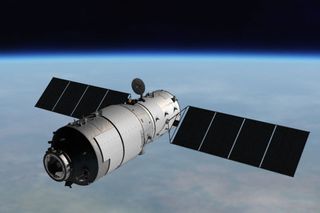
Tiangong-1, China's first space lab, launched in September 2011 and will fall to Earth in 2018 between March 30 and April 2. See photos and images of Tiangong-1's mission in our full gallery here.
Launched in 2011
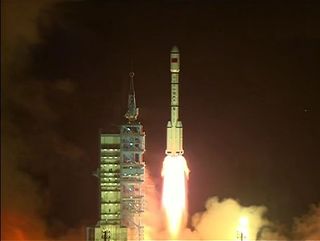
China's first space laboratory module, Tiangong 1 (Mandarin for "Heavenly Palace") blasts off from the Jiuquan Satellite Launch Center on Sept. 29, 2011. The module was built fly a 2-year mission for docking tests, first by the uncrewed Shenzhou 8 spacecraft and later by visiting crewed vehicles during the Shenzhou 9 and Shenzhou 10 missions. The last mission to Tiangong-1 flew in 2013. A successor, Tiangong-2, launched in 2016.
Fiery Fate
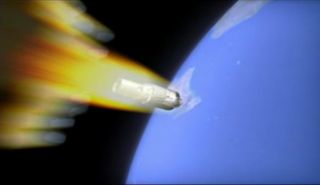
In 2016, China's Manned Spaceflight Engineering group lost control of Tiangong-1, sealing the spacecraft's fate. Left uncontrolled, the space station module will fall to Earth and burn up in the atmosphere as in this illustration.
How Tiangong-1 Will Die
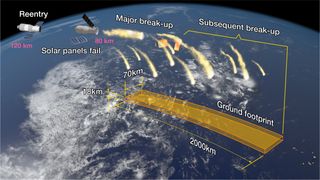
Tiangong-1 weighs 8.5 metric tons, so it won't burn up all at once during its fall from orbit. This graphic by the Aerospace Corporation shows how the station module will break apart during re-entry.
Where Will Tiangong-1 Fall?
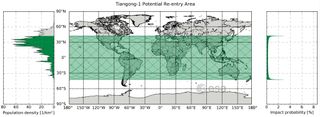
That's a good question. Experts tracking Tiangong-1 know the space lab will fall to Earth between late March and early April 2018, but exactly when and where is impossible to predict. Scientists at the European Space Agency have estimated the latitudes on Earth where debris could fall, leaving a vast potential target area for Tiangong-1.
Dangers Mapped Out
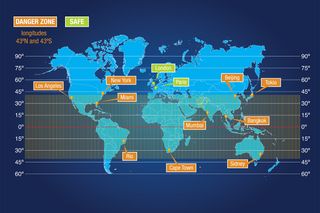
This map shows the risk zone where the China's Tiangong-1 space station will crash into Earth on dark blue background.
Blast-off
Docking in Space
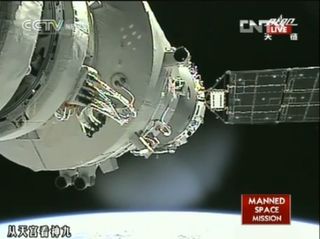
Tiangong-1 was the first destination for China's orbital space vehicles. This still from a CNTV broadcast shows China's Shenzhou 9 space capsule just after it was manually docked to the Tiangong 1 space lab by astronaut Liu Wang on June 24, 2012.
Get the Space.com Newsletter
Breaking space news, the latest updates on rocket launches, skywatching events and more!
Tiangong-1
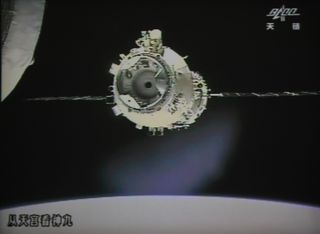
A photo of the giant screen at the Jiuquan space center shows the Shenzhou-9 spacecraft approaching Tiangong-1 module for the automatic docking on July 18, 2012.
Tiangong 1 Space Lab Orbital Diagram
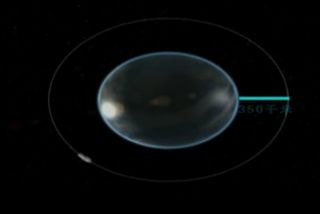
Tiangong-1 was designed to fly in an orbit of 350 kilometers above Earth during its operational mission.
How China's First Space Station Will Work (Infographic)
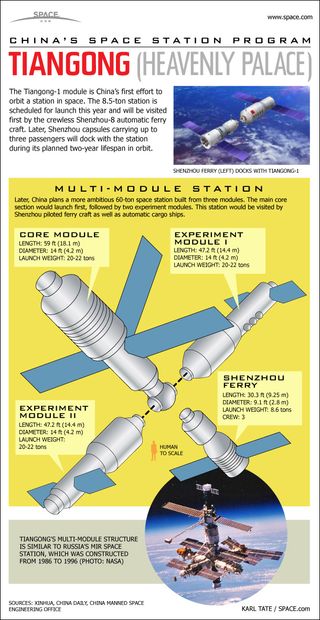
Take a look at how China's first space station, called Tiangong ("Heavenly Palace") will be assembled in orbit in this SPACE.com infographic.
Join our Space Forums to keep talking space on the latest missions, night sky and more! And if you have a news tip, correction or comment, let us know at: community@space.com.

Space.com is the premier source of space exploration, innovation and astronomy news, chronicling (and celebrating) humanity's ongoing expansion across the final frontier. Originally founded in 1999, Space.com is, and always has been, the passion of writers and editors who are space fans and also trained journalists. Our current news team consists of Editor-in-Chief Tariq Malik; Editor Hanneke Weitering, Senior Space Writer Mike Wall; Senior Writer Meghan Bartels; Senior Writer Chelsea Gohd, Senior Writer Tereza Pultarova and Staff Writer Alexander Cox, focusing on e-commerce. Senior Producer Steve Spaleta oversees our space videos, with Diana Whitcroft as our Social Media Editor.









